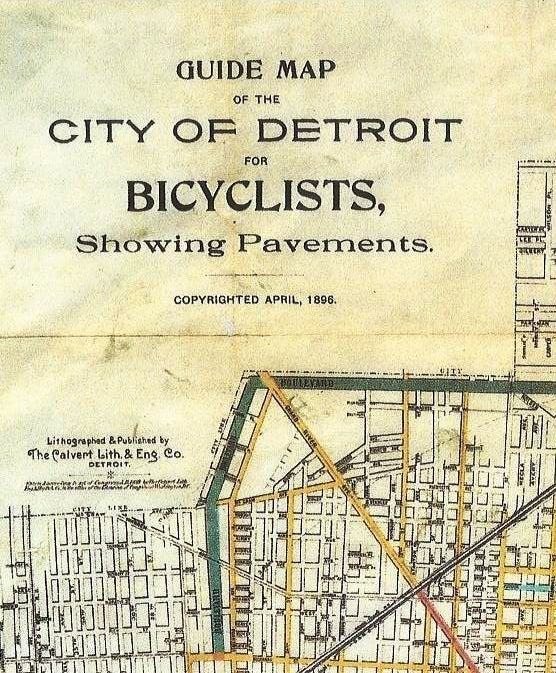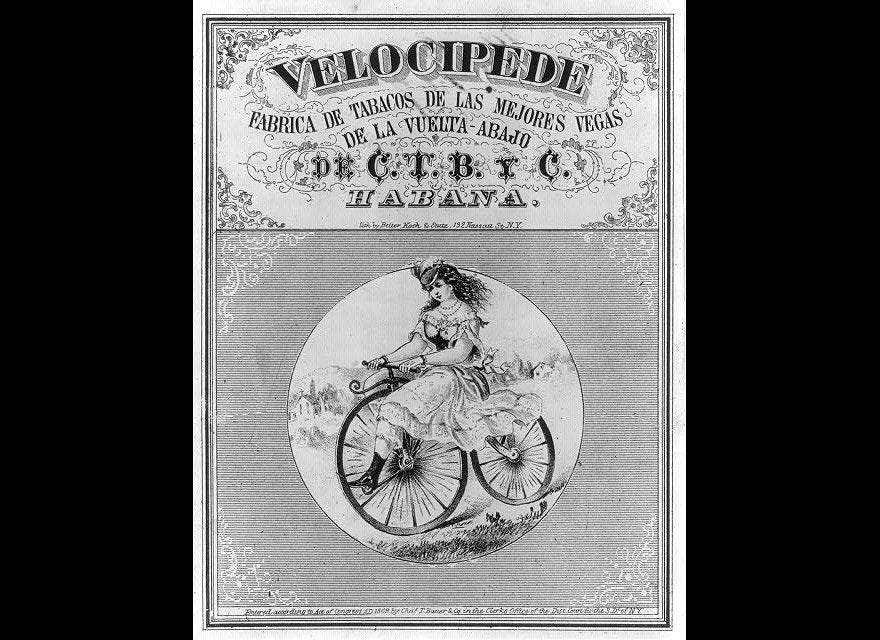
Although it may be difficult to believe, bicycles were once nearly as popular as cars in Detroit. In fact, they helped pave a path that allowed the automobile industry to flourish in the Motor City.
Jack VanDyke is a self-educated student of the city's cycling history who works at a local bike space called The Hub of Detroit. He helped design an exhibit for the The Model T Automotive Heritage Complex that explores the historical relationship between bikes and automobiles in Detroit and is currently working on a manuscript on the subject. The Huffington Post spoke with VanDyke about Detroit's first bicycling craze in the 1880s and '90s, and its relationship to the birth of the automotive industry and contemporary cycling in the city.
Scroll down for images of the early days of cycling.
What were the early days of the bicycle craze like in Detroit?
In the mid to late-1860s, the pedal-driven bike came over from Europe. That was the first wave of cycling mania, but it didn't last very long because it still wasn't very practical. Iron tires, wooden rims, front-wheel drive -- they were all like a kid's tricycle, but two wheels and adult-sized. It kind of came and went in the 1860s.
As the technology got better with the pneumatic tire and the wire spoked wheel, the bikes became more comfortable. They became safer. What came along in the 1880s was called the "safety bicycle" -- we now call it the bicycle. But back then, it was called the safety bicycle because it was this radical redesign that made the bicycle safe and accessible to everybody.
So what was happening in Detroit was happening all over America, and it was a mania it was really a cultural-saturating phenomenon. Many consumer products tried to latch onto the mania by using bicycles as branding with their products.
But the reason I think Detroit got so heavily into it is because -- even more than most American cities -- it was practical to ride bicycles in Detroit because the city's flat.
A writer for the Detroit News estimated the city's daily ridership [at that time] at 75 percent of the city residents. That seems really high. I'm personally skeptical of that number, but I haven't found much better information.
Other accounts from other cities seem to indicate similar things -- that a majority, and a very visible majority of the city's residents, had taken to cycling. It was fairly inexpensive. Second-hand bikes even by the 1890s were fairly commonly available and cyclists had been fighting the good roads movement -- lobbying for paved roads, for rights with regards to horses and horse carts. They had basically been fighting for these amenities and their labor had started to bear fruit and you kind of saw it in the increased cycling traffic. People were getting out on bikes and it was becoming a big problem for the other types of traffic in the city.
And cyclists were routinely cited for riding too fast. The big danger with riding too fast is that you would spook horses, and then runaway horses could be a big problem, especially for merchants. Policeman, officers who patrol on bicycles became pretty common in the late 1800s. Old photos will show these huge gears on their bikes.
They needed those huge gears to track down the "scorchers," which was the term of the day for the young men of privilege who rode really fast without regard. Now we call them "hipsters," but back then, scorchers was the term for cyclists who knew they were very fast, that very little could keep up with them and they tended to wreak havoc. So police had big gears [on their bikes] to chase these guys down, the same way that bike cops in Manhattan [today] have really nice bikes so that they can chase down the scofflaw messengers.
The two-wheel vehicle in general came about because of an extreme horse shortage, and I think that sort of set the tone. A lot of things that were done by horses, like small parcel delivery, lighting lamps, all that stuff, started to be done with the bicycle.
How did people use bikes for recreation?
A lot of the literature for the time really pushed and emphasized the bike's salutary qualities. It was for the city dweller to escape the choking pollution of the city and go sniff some daisies along some rural highway.
There's an 1895 bike map that has a list of the outside runs. It shows all the small towns outside Detroit and it shows the distances out to those towns, because I think cyclists were using that map to get the hell out of Detroit and they would just ride out the radial avenues.
The other thing that's really neat are the old cycling clubs. If you think about the Detroit Athletic Club and what a fancy environment that is -- The Detroit Club over at Cass and Fort -- those old-style gentleman's clubs. That's kind of the image you should have in your head. Cyclists [at these clubs] by and large tended to be the privileged set, so their clubs were as much places to hang out as places to gather for rides.
The Detroit Wheelmen built their club on land that is now Comerica Park. [It was] really swank. You wouldn't see a cycling club of today come up with a club house like that because it would have different goals.
And there were still sports heroes: Arthur Zimmerman, Tom Cooper -- the hometown hero.
Was he from Detroit?
Oh yeah, the Star Bicycle Club, one of two bicycle clubs in Detroit that merged to become the Detroit Wheelmen. He raced for them and then he raced for the Detroit Athletic Club and then went onto race nationally. He was a rival of Major Taylor, who was a really well-known late 1800s, early 1900s racer. He was the only racer of color to reach the top level of the sport. They were right on top of the sport at the very same time.
Cooper was a real bigot -- not a nice guy. He rode for the white team, was sponsored by the white bicycle company and his jersey was all white. He had white tires on his bike. It was just crazy.
How did bicycles set the stage for automobiles?
The paved roads are a huge part of that story. The cycling community had been lobbying for 10 to 15 years for better road pavement [by the 1880s] and right at the tail end of that period came the first experimentation with gasoline on chassises supported by bike wheels or on wagon chassises. They benefitted inadvertently from all these paved roads.
The other thing is that Henry Ford is given a lot of credit for the assembly line, but I think there were things like the assembly line being used in a lot of factories.
A lot of bike factories were already being set up using a linear style of production, even if they didn't have a product being moved physically along a conveyer belt. A lot of the manufacturing processes for drawing wires, for making ball bearings, for making pneumatic tires -- all that stuff was developed for the bike industry, even making tubing.
Why do you think the history of bikes is important?
We're seeing something of a return to the popularity [of cycling] that we saw at the end of the 1800s. For most of the 20th century, bikes had moved out of the cultural mainstream. Until the '90s and 2000s, I don't think we saw the same shift towards transportation cycling, towards deliberate lifestyle cycling. The rise of the Critical Mass movement and the shift in preference from a suburban, automobile-based living arrangement to city living with transit, walkability -- all these preferences that have developed a little more recently.
The history of the bike is so long now that I think that it helps to understand its early history as a way of figuring out what we're going to do as more and more people get into cycling. And the reason I'm so fascinated in it as a Detroit resident is because the whole reason it moved away from the cultural mainstream had everything to do with Detroit.
Check out images of the early days of Detroit cycling below:
